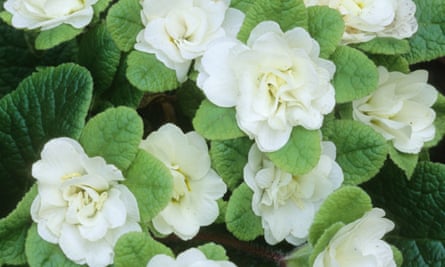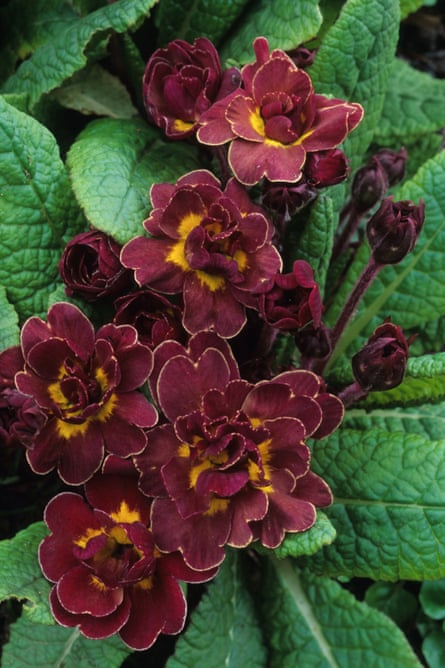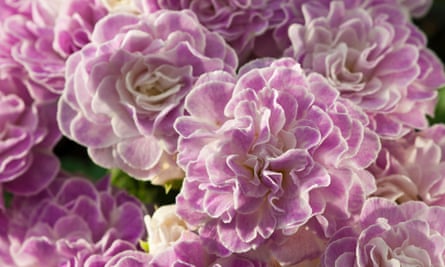If asked to name something intimately associated with Devon, I hope that the good audience and fine contestants of ITV’s Family Fortunes would shout out that most glorious of spring flowers, the primrose. This year, on road verges and wayside banks up and down God’s Own County, the primroses have grown seemingly more thick and floriferous than ever before, perhaps held back by the cold weather, so that they flowered in one glorious show.

As a wild plant, there is nothing that the primrose likes more than to be treated roughly. Thrash, scratch and scrape them and the verge vegetation on which they grow, and they respond magnificently, seeding around with abandon. This is precisely the treatment they get at the hands of the Highways Agency and their contractors Kier Mouchel on the trunk roads through Devon, and they positively flourish on it. If only the same could be said of their double-flowered brethren in gardens.

Double primroses have been treasured by horticulturists since Elizabethan times, when the different varieties were simply known by the colour: among them, French grey, cream, white and, of course, sulphur. Such plants arose as chance foundlings, but only very rarely, for the doubling of the petals typically occurs at the expense of both the female and male fertile bits of the flower: in short, they are generally incapable of producing seed, even if a bee could manage to pollinate them through their thick tuffet of pleated petals.
By the late nineteenth century, the first varieties received names – ‘Madame Pompadour’ and ‘Arthur du Moulin’ were continental introductions and perhaps the most famous of all – but their rarity in gardens is also in good part because they are have a reputation for being difficult to grow, with an irritating habit of dying when your back is turned on them for a moment. Both are apparently now extinct, in spite of being grown by nurserymen way into the second half of the twentieth century.

So it was especially pleasing to see double primroses growing like veritable multicoloured cauliflowers at Glebe Garden in North Cornwall, home both to keen horticulturist Caroline Stone and her fabulous National Collection. Over the past few years, Caroline has managed to track down roughly 80 varieties, and most more than flourish for her.
The trick for good cultivation, apparently, is to grow them in rich, fertile and well-dug soil (if anything on the heavy side), and feed well, mulching annually with a generous helping of well-rotted manure and leaf mould. Divide every other year, either in early autumn or in May after flowering. They don’t like excessive summer drought, so a spot on the north side of a wall, or shaded by shrubs or summer-growing herbaceous plants seems a requisite too. And in this day of loamless, peat-based composts, vine weevil can be a particular scourge of all primroses, responsible for the loss of many a rarity, so take precautions against them.
Too much effort? I wonder if it is any more onerous than the care needed for the hanging baskets being planted up right now, with hours of rigorous watering, feeding, weeding and dead-heading regimes on the cards over the summer ahead.
At Flete, the walled garden I am restoring, we are slowly building up a collection of doubles, though we have a long way to go before our south Devon collection is as fine as Caroline’s, and much of the fun has been tracking down rare varieties that have largely vanished from cultivation. As for recommended varieties, I would just grab any that you can lay your hands on, as they disappear from commerce quickly.

In any case, I don’t think that there is such a thing as an ugly double primrose. But this year, intensely rich yellow ‘Melenoc’h’ available from Barnhaven Primroses in France, the smart rich blue-purple ‘Belarina Amethyst Ice’ bred by David Kerley and widely available in garden centres, and the chargrilled peach with raspberry coulis confection that is ‘Millwood Double’ from the specialist Devon nursery Millwood Plants are among the new varieties that have given me much pleasure.
Such breeders, gardeners and nurserymen are some of the very few taking the extra care needed to grow and produce this age-old group of spring flowers: to them we owe a debt of gratitude.

Comments (…)
Sign in or create your Guardian account to join the discussion